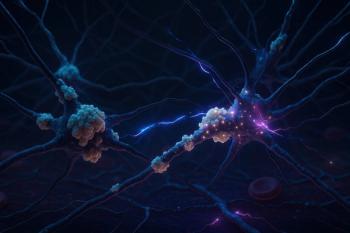
Bipolar Mixed States: Dangerous, Common-and Sometimes Iatrogenic
New research demonstrates why it’s crucial to examine manic and other symptoms in their entirety when making a treatment plan.
RESEARCH UPDATE
Mixed states are far more common than previously recognized, ranging from 20% to 70% of patients presenting with depression, depending on the definition and the setting.1 Really?
The majority of patients with depression might be mixed? That would be clinically very important, if true: mixed states are associated with increased risk of suicide.2
Antidepressants have been associated with the development of mixed states.3 Thus follows an ironic corollary: in theory, then, one way to address suicidal depression is to taper off the patient’s antidepressant. A
But this treatment plan is quite counterintuitive for patients: “Here I am severely depressed and your plan is to stop my antidepressant?” Such a plan will not make any sense unless they understand what mixed states are and that antidepressants can induce them.
So forgive my pedantry while I offer a quick explanation that has worked well for me, and I hope may help you. Remember, it’s critical that patients understand why they might do better with less medication than with more.
First, try to undo the understandable misconception the name “bipolar” implies. Using your right hand, extend your thumb vertically and your little finger in the opposite direction, toward the floor. “Bipolar disorder-like the North and South poles, right? Actually, no: it’s more like a graph.”
Now hold your right thumb horizontal and your index finger vertical, while you explain that “there’s a manic axis” (pointing with your left hand at your index finger) “and a depressive axis” (pointing at your thumb).
“In between, there can be many combinations of those symptoms: that’s what we call a mixed state.” (Notice that having done all this with your right hand, the graph you’ve displayed is oriented properly as you face your patient).
The
DSM-5 has expanded mixed states to include the red dots (with some restrictions). But back in 1995, just after DSM-IV came out, a
The bottom line
DSM-5 and the Cincinnati views of mixed states create a spectrum from very mixed to slightly mixed to not at all mixed. Although this might seem to complicate management of mood states, the bottom line is rather simple: when a depression is mixed, adding an antidepressant is not likely to help and may well make things worse.
Consider instead one of the many alternative means of treating bipolar depression that have as much evidence for efficacy as antidepressants (a low bar, at least in Bipolar I) but don’t induce cycling or mixed states (
At what point along the spectrum of mixedness do antidepressants begin to pose the risk of making things worse? In a large study by
Compared with the Cincinnati spectrum view, the DSM-5 definition is considerably more complex. It allows only some manic symptoms to count toward a mixed state, and excludes others. But this restriction is already intensely debated.7,8
While waiting for the controversy to diminish, we can focus on the general implications of the graph. Before you prescribe an antidepressant, look carefully for manic symptoms (particularly those that have been associated with poor outcomes with antidepressants: agitation, irritability, distractibility, and pressure.6) Why? Primum non nocere, of course.
Disclosures:
Dr Phelps is Director of the Mood Disorders Program at Samaritan Mental Health in Corvallis, Ore. He is the Bipolar Disorder Section Editor for Psychiatric Times. Dr Phelps stopped accepting honoraria from pharmaceutical companies in 2008.
References:
1. Perugi G, Angst J, Azorin JM, et al.
2. Rihmer A, Gonda X, Balazs J, Faludi G.
3. Swann AC, Lafer B, Perugi G, et al.
4. Phelps J, Manipod V.
5. McElroy SL, Strakowski SM, Keck PE Jr, et al.
6. Frye MA, Helleman G, McElroy SL, et al.
7. Goldberg JF.
8. Maj M.
Newsletter
Receive trusted psychiatric news, expert analysis, and clinical insights — subscribe today to support your practice and your patients.














